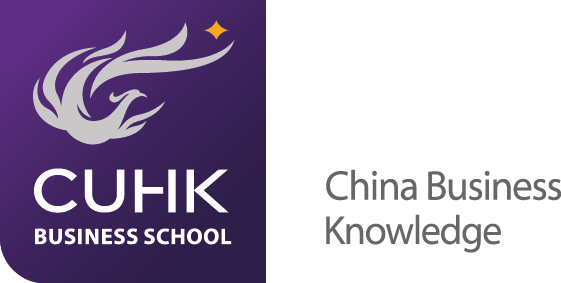Featured Faculty

Lai, John Hon-weng
Principal Lecturer
Assistant Dean (Undergraduate Studies)
Director, Integrated BBA Dual Degree Programme
Director, Office of Co-operative Education Programme (OCEP)
More in Innovation & Technology, Leadership ...
How lack of clarity fuels team innovation
• 6 mins read
How can companies innovate? New research suggests clear goals can harm, and the answer lies in giving employees the freedom to make decisions
In today’s competitive business environment, innovation is an often-heard mantra that eclipses all else. At the same time, teamwork has also gained greatly in importance, supported by the rise of workplace tools such as Slack, which have brought a “social media” design to collaborative corporate culture. While organisations must have individuals working together to create innovation, do excellence and innovation actually arise from having clearly defined goals that all employees must universally support?
This is a question set out in a new study by Dr John Lai, Senior Lecturer at the Department of Management at the Chinese University of Hong Kong (CUHK) Business School. Will goal clarity lower team innovation? A moderated mediation model of inter-team trust is a body of research between Dr Lai and Steven Lui at the UNSW Business School, Ben Luo Nanfeng at Renmin University of China, and Peter Moran at China Europe International Business School. Their work challenges conventional views that clear goals make innovation more likely.

“When a team’s goal is clear, team members become more selective in the information they are motivated to seek and acquire and less selective in what they screen out,” says Dr Lai. “This resulting selectivity and commonality of knowledge sought by each team member suggests that the team as a whole is more likely to acquire less knowledge.”
Many existing studies have assessed the question of whether clear goals foster innovation due to a “team climate” or “knowledge integration” perspective. In team climate thinking, a clear strategy makes for more cohesiveness among teams. From a knowledge integration point of view, if the workplace is a trusting environment, innovation should further increase with more knowledge acquisition and sharing.
Dr Lai and his collaborators challenged the team climate perspective for neglecting how having clear goals affects gathering and disseminating knowledge. As the researchers point out, goal clarity could inadvertently restrict learning. The team also indicated that while trust is crucial to innovation, it is not uniform or universal within organisations. Some colleagues and teams can get along, while others have relationships that are marked by distrust. This will impact how much innovation can take place.
Debunking the myths of innovation
The researchers point out that previous studies have not resulted in a clear link between the impacts of team climate or knowledge integration perspective towards innovation. “Research often takes on a reduced form of hypothesis, where no empirical test of the specific mediating mechanism is reported,” Dr Lai points out.
Meanwhile, an increasing number of recent studies have demonstrated that knowledge transfer in an organisation is unrelated to innovation, and is much more specific to individual team relationships. Could this mean that if certain people or teams are particularly talented, they should be left to their own devices and away from the company-wide dictates and goals?
“Our finding suggests that while goal clarity does not reduce the amount of knowledge acquired from other teams, it reduces the impact of the acquired knowledge on team innovation. ”
Dr John Lai
The gap was there that obviously needed to be bridged, and the team set about addressing this with a moderated mediation model. This showed how the interaction of goal clarity and inter-team trust impacts innovation, while looking at knowledge inflows within the symbiosis of inter-team trust and innovation. To test the model, the researchers examined service innovation at 150 outlets of a large apparel retailer in mainland China, Hong Kong and Macau.
There were several criteria involved in choosing these companies – continuous knowledge sharing through regular training workshops for shop managers, the importance placed on company-wide innovation, a recent corporate-wide brand revamp, and staff being introduced to new practices, with managers being able to adopt at their own pace. The study used two questionnaires in Chinese, one that was answered by retail shop managers and one by retail staff, along with 14 interviews with senior managers within the organisation. All studies were kept confidential to eliminate bias.
Goal clarity is a double-edged sword
In the age of social media and ever-increasing consumer demands, innovation is ever crucial to sales and profits. Retail was chosen as the arena for this study, as the stores are run by teams that sell an existing product and innovate to serve customers better. This study is important to show clear goals can have a negative effect on innovation, while trust only supports innovation when team goals are less clear.

Having goal clarity is a double-edged sword for innovation, which according to Dr Lai “reinforces a shared mental model and hence sustains and amplifies the cognitive bias of a team that will restrict the acquisition and interpretation of external knowledge.”
This crucial aspect is often overlooked by previous studies, and can also be applied to the concept of trust. Dr Lai and his collaborators found that inter-team trust and innovation are linked positively when goal clarity is low. However, trust is hard to define within an organisation, and there are myriads of overlapping relationships between team leaders, co-workers, other teams and departments. In general, the connection between trust and innovation fluctuates significantly.
“Our finding suggests that while goal clarity does not reduce the amount of knowledge acquired from other teams, it reduces the impact of the acquired knowledge on team innovation,” says Dr Lai.
Harmful group-think can be avoided
The study offers practical advice for retail operators – teams competing for sales can nonetheless benefit each other by sharing knowledge of local markets, customers and inventory levels. “It is useful for business firms to build a trusting relationship among their work teams rather than advocating a hostile competition-based atmosphere that has become common in the retail industry nowadays,” says Dr Lai.
Having said that, managers need to be highly attuned to the cognitive biases that goal clarity creates among team members. “When goals are clear, team members could be biased against the use of new ideas and practices, and such bias could harm innovation,” Dr Lai adds.
With clear goals, the net positive effect that knowledge transfer has on innovation can be harmed. This is especially the case when managers have been assigned clear performance goals for their teams. As the study pointed out: Goal clarity benefits innovation, while cognitive bias deters innovation. The double-edged sword of goal clarity is an increase in biases and a reduction of knowledge transfer through inter-team trust.
To reduce bias, managers can seek to add diversity to their teams. This could be gender, cultural, educational, and personality-wise. They may also rotate people across teams. “Greater team diversity and personnel rotation may lower the tendency of group think. Importantly, both are readily employable in the retail sector,” says Dr Lai.







